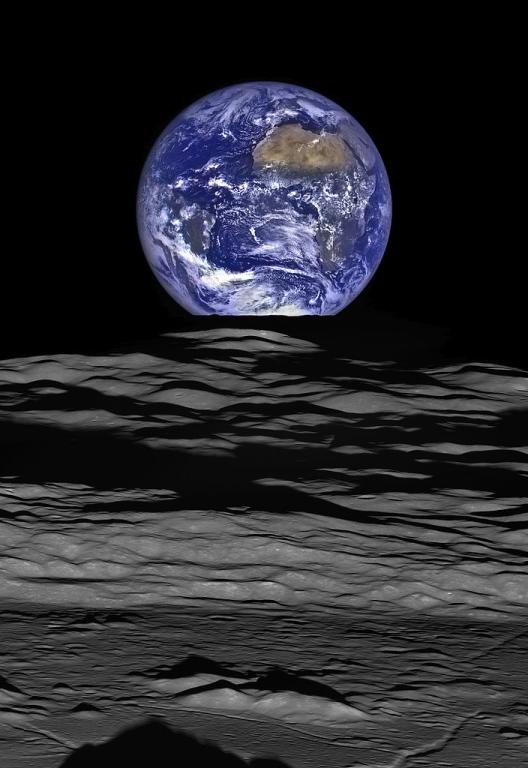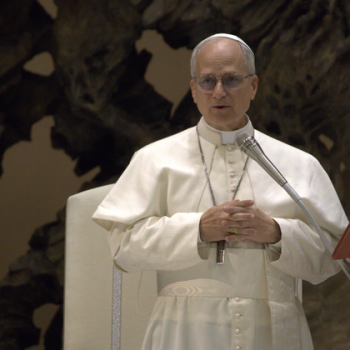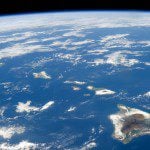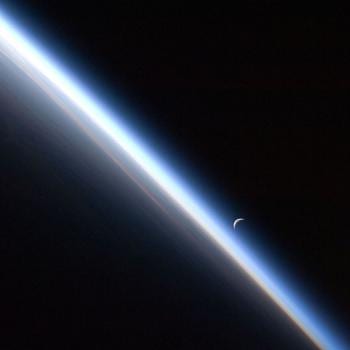
(NASA / Goddard Space Flight Center / Arizona State University)
Wikimedia Commons public domain image
I carry on now with my appropriation, for my own undoubtedly wicked purposes, of material drawn largely (though not quite entirely) from the online “List of Fine-Tuning Parameters” compiled by Jay W. Richards. (My first entry taken from his list, and explicitly dependent upon it, was this one: “An initial survey of the “four fundamental forces” and the “cosmological constant.””). My second was ““Initial Conditions and ‘Brute Facts.’”) As I said in both of those blog posts, I claim no originality for these entries, and I repeat that statement here. Moreover, although I intend to expand and rework what I’ve begun in this regard, I may never claim any originality on the topic. (It’s not, after all, exactly my area of special expertise.) I do, however, intend to eventually rework these notes in successive stages as I draw upon and incorporate materials from other sources for a much larger project that I have in mind). Dr. Richards follows his list of five “Cosmic Constants” with a list of four “Initial Conditions and ‘Brute Facts’.” Those were, respectively, the topics of my previous two entries. In this blog post, I’ll briefly list and summarize at least a few of what he terms ““Local” Planetary Conditions”:
Even in a universe that is arguably fine-tuned overall, at the cosmic level, conditions can and do vary dramatically from one far distant location to another. Life exists on Earth, of course, but almost certainly not on Jupiter or Mercury or in the asteroid belt. Even in this fine-tuned universe — as critics of cosmic fine-tuning delight in pointing out (a point, in fact, to which I will respond at some future time) — the vast majority of places in the universe, to say nothing of space itself, are unsuited for life. In an interesting book entitled The Privileged Planet, astronomer Guillermo Gonzalez and his co-author, Jay Richards himself, identify twelve broad, widely recognized fine-tuning factors that appear to be required to build a single, habitable planet. (A quite distinct book on a closely related subject — I own and have read both it and Privileged Planet — is Rare Earth: Why Complex Life is Uncommon in the Universe [2003], by paleontologist Peter D. Ward and astrophysicist Donald Brownlee, both of the University of Washington.) As it happens, every one of the dozen factors listed by Gonzalez and Richards can be found together in the Earth. And there may well be many more such factors. In fact, observes Richards, most of them could reasonably be split out to make sub-factors, since each of them contributes in multiple ways to the habitability of a planet:
- Steady plate tectonics with right kind of geological interior — This allows the carbon cycle, which appears to be essential to the rise and survival of life, and it generates a protective magnetic field). If the Earth’s crust were significantly thicker, plate tectonic recycling could not take place. (And, yes, I’m aware that plate tectonics or, perhaps more precisely, the process of subduction can be and is a destructive factor, leading to such events as the recent lethal earthquake in Türkiye. I’ll be commenting on that topic shortly, either here or in an article for Meridian Magazine.)
- Right amount of water in crust — This provides the universal solvent for life. A neighbor and friend of mine, a retired Ph.D. nuclear chemist, once observed to me that, in and of itself, water was a compelling “natural theology” argument for the existence of God. For years, he promised an article for Interpreter: A Journal of Latter-day Saint Faith and Scholarship laying out his thoughts on the matter. But alas, he recently passed away. Happily, though, there are now some good treatments of the “miraculous” character of water out there, probably beginning with the Harvard chemist and physician Lawrence Henderson’s 1913 The Fitness of the Environment and continuing, much more recently, with The Wonder of Water: Water’s Profound Fitness for Life on Earth and Mankind (2017), by Michael Denton, M.D., Ph.D., which I have not yet read.
- Large moon with right planetary rotation period — This factor stabilizes a planet’s tilt and contributes to tides. In the case of the Earth, the gravitational pull of its moon stabilizes the angle of its axis at a nearly constant 23.5 degrees. This ensures relatively temperate seasonal changes, and, so far as current biology and science can ascertain, provides the only climate in our solar system that is mild enough to sustain complex living organisms.
- Proper concentration of sulfur — This is essential for several vitally important biological processes.
- Right planetary mass — This allows a planet to retain the right type and the right thickness of atmosphere. If the Earth were smaller, its magnetic field would be weaker, which would allow the solar wind to strip away our atmosphere, slowly transforming our planet into a dead, barren world. That may have been what happened to the planet Mars.
- Near inner edge of circumstellar habitable zone — Such a location allows a planet to maintain the right amount of liquid water on its surface. (See above, regarding water.) If the Earth were just five percent (5%) closer to the Sun, it would experience a runaway greenhouse effect, with temperatures rising to nearly nine hundred degrees (900º) Fahrenheit. This is basically the condition of the planet Venus. On the other hand, if the Earth were roughly twenty percent (20%) further from the Sun, it would be subject to runaway glaciations — which, again, would resemble the situation of Mars, which appears thus far to be biologically sterile
- A few, large Jupiter-mass planetary neighbors in large circular orbits — This factor protects the habitable zone of a solar system — and, specifically, our solar system — from too many comet bombardments. If Earth were not protected by the enormous gravitational pulls of Jupiter and Saturn, it would be far more susceptible to collisions with devastating comets that would cause mass extinctions. As it is, the larger planets in our solar system provide significant protection to the Earth from the most dangerous comets. Think of them, perhaps, as something like vast vacuum cleaners.
- Outside spiral arm of galaxy — This factor allows a planet such as Earth — and, indeed, our entire solar system — to stay safely away from supernovae, which could very easily be catastrophically destructive to minorities and women.
And yes, by the way, I’m well aware of the late Douglas Adams’s “sentient puddle” spoof of fine-tuning arguments. I’ll post a response to it in the very near future.
P.S. I notice that the exceptionally mendacious person to whom I’ve occasionally referred as my “Mini-Stalker,” one of my lesser critics over at the Peterson Obsession Board, has just announced with breathless excitement that the blog entry above, like its two predecessors (mentioned above), depends to a large degree upon a piece by Jay Richards of the Discovery Institute. I thought that I had said that very thing pretty clearly above and in the two prior posts, but perhaps I should repeat it here, even more clearly: This blog entry, like its two predecessors (mentioned above), depends to a large degree upon a piece by Jay Richards of the Discovery Institute.
My Mini-Stalker also seeks to discredit the late biochemist Lawrence Henderson, whom I mention above, on the grounds that he is an associate of the Discovery Institute, a group that, Mini-Stalker triumphantly points out, many people disdain. Alas, though, Professor Henderson, who taught at Harvard Medical School (and who was, by the way, evidently a religious agnostic), died in early 1942, and his book The Fitness of the Environment, which I own and have read in a reprint edition and which I also mention above, was published in 1913. (A German edition followed in 1914.) However, the Discovery Institute was founded in 1990. Presumably, Professor Henderson isn’t affiliated with them or on their payroll.

















